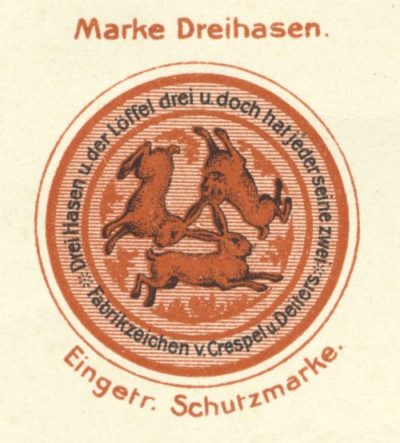Always one step ahead
Crespel & Deiters and its Three Hares …

Joseph Deiters (1826–1900)
The Crespel & Deiters logo still features three hares today. What are they all about? Crespel & Deiters was founded as a starch factory in Germany at the end of the 19th century. The company was borne by its founder’s visions. While the production description from 1858 still included starch, pasta and sago as products, Joseph Deiters, co-founder and partner in Crespel & Deiters, revised the range of products in 1865. Obtaining high quality wheat starch is now the company’s central core activity. This concentration on the natural raw material wheat, with all its advantages and possibilities, also needed to be communicated externally. At a time when marketing in Europe was still in its infancy, Joseph Deiters sons Gustav and Hugo Deiters understood the value of a consistent quality and brand strategy if they were to assert themselves in a hard-fought competitive market.
Quality as the highest objective
“High quality against lower-cost competition” was the Crespel & Deiters maxim at the time, combined with the challenge of constantly delivering quality that always remains high. Which, with a natural base product like wheat that is subject to natural fluctuations, is not very easy, and was achievable only with a consistent quality strategy.
Efficient procurement and production processes today still guarantee the high availability and quality of all Crespel & Deiters products.
Making the brand visible

During a trip to Paderborn, Joseph Deiters became fascinated by the Window of Three Hares in the cathedral cloister. He saw in the archetypal symbol a strong connection with his own company and its focus and challenges. To him, the three hares symbolised growth, speed, connection, community and presence, but also humility before natures and its gifts.
When Crespel & Deiters decided to develop a protected trademark as a seal of quality for its products, the three hares symbol was soon chosen. In 1899, the company registered and protected the symbol as a trademark with the Imperial Patent Office in Berlin.
The Crespel & Deiters logo was born. It was intended to be the external face of the company and its products. This visible, and at the time completely revolutionary way of presenting a company’s identity, made a significant contribution to Crespel & Deiters’s success , and became the guarantee of product quality that always remains high.